2022 Impact Report
2022 Research Highlights (see details below)
Breakthrough gene therapy results showing rescue of FOXG1 brain structure, behavior, memory and cognition symptoms in animal models
Positive results on initial compound drug screens to identify molecules to increase FOXG1 levels; now moving forward to larger screens
Never-before understanding of FOXG1 biology uncovered from six FOXG1 patient human cell lines and mouse models
Successful testing of guide RNAs to increase FOXG1 expression with a CRISPRa Cas-9 system
Discovered ASO sequences (antisense gene therapy) to modulate FOXG1 expression; testing initiated with Creyon Bio
FOXG1 data package presented to several biotech companies with high interest
ONCE UPON A GENE - EPISODE 163 - How Far We've Come - with Nicole Johnson
Effie Parks talks to the co-founder of the FOXG1 Research Foundation, Nicole Johnson in this episode of Once Upon a Gene. Nicole shares the FOXG1 Research Foundation journey marking five years, and shares tips on how to throw a successful conference for scientists, clinicians and parents from all over the world
Global Genes Podcast: Empowering Rare Disease patients With Their Own Health Recods
Global Gene’s RareCast Podcast interviews our CEO and Co-founder about our innovative Ciitizen Natural History Study and how health records empower parents and caregivers to make sure researchers really understand our children’s condition.
FOXG1 Research Foundation to Pioneer a Machine Learning Approach to Accelerate Rare Disease Research with Support From the Chan Zuckerberg Initiative
The parent-led FOXG1 Research Foundation (FRF) announced today a nearly $500k grant from the Chan Zuckerberg Initiative (CZI) to revolutionize the ability for patient-led advocacy groups to use machine learning to help accelerate rare disease drug development.
The First FOXG1 Scientists Symposium - A Recap.
The first FOXG1 symposium was a tremendous success in bringing together scientists from around the world who are interested in research around FOXG1 to collaborate with one another to find a cure. Scientists from Japan, Australia, Italy, the UK, the US, and more, presented and held deep-diving sessions to discuss what we know and what we need to know to drive research for FOXG1 syndrome.

